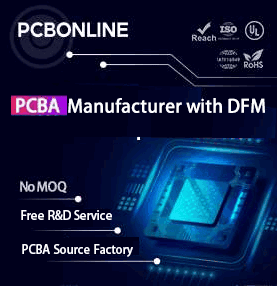Given the need for digital output in today’s changing world, businesses need to create and maintain content on the fly to keep up with ever-changing consumer needs. Unfortunately, most content management systems (CMS) do not provide such flexibility. Most come with an out-of-the-box solution, and once a business decides on a template or process, they’re relegated to the antiquated confines of such an approach, only made more complicated with time. Therefore, a headless CMS eliminates these concerns; content generation is simplified as content creation and distribution are not interconnected; thus, teams work more seamlessly and collaboratively when new ideas emerge.

This paper will discuss how a headless CMS solution for content generation provides changing flexibility for long-term digital success.
Faster Content Delivery
Agile means working fast and efficiently. Simplify content management with headless CMS, as it improves content delivery at lightning speed because the content management system isn’t even attached to the front-end deployment. When something is ready to go live, content creators can get their changes published instantly in real-time with little backend coding or development effort to be made. Companies can keep up with market needs, changes in competition, or customer feedback as quickly as possible to ensure content is always current, relevant, and engaging.
More Flexibility and Change-Friendly
Agile is all about flexibility. A headless CMS provides organizations with an unprecedented level of flexibility and change-friendliness that makes it easy to change content across multiple channels and digital properties without having to redeploy after extensive processes. Instead, content teams can feasibly try new configurations, new messaging, or a new look and feel but also pivot quickly based on their findings for greater impact. It allows businesses to remain challenged but operationally capable and competitive with such fluid flexibility.
Increased Interdepartmental Collaboration
Agile content development necessitates working across various departments marketing, visual design, development, copy, and more. A headless CMS improves upon this by providing access for multiple people simultaneously with clear role acknowledgments. Team members can collaborate during creation, editing, and simultaneous review instead of having to wait for one phase to grasp what another phase needs or should have. The easier and faster this process can become, the more innovative people will feel and thus allow for faster turnarounds and more effective development pipelines.
Omnichannel Experiences Made Easy
Today’s customers expect to have a fully integrated experience with any digital touchpoint. A headless CMS aids in omnichannel content delivery out of the box. The decentralized, API-driven structure that headless provides allows for content to be consistently and dynamically pushed to websites, apps, voice technology, social media, and more with relative ease. The business can replicate brand standards and messaging and user interaction across various touch points while increasing customer satisfaction and retention.
Supports Continuous Integration and Delivery (CI/CD)
Agile development relies on continuous integration and delivery (CI/CD) to frequently push new content without compromising quality. A headless CMS can fit well within a CI/CD process, supporting automated content deployments, ad-hoc pushes, and the ability to implement changes quickly. Both developers and content teams can continuously refine content experiences and feel confident in deploying changes without disrupting users or crashing the system.
Real-Time Analytics for Rapid, Data-Driven Decisions
One of the greatest perks of operating in an agile setting is the frequent ability to learn from data. A headless CMS can seamlessly integrate with powerful analytics tooling to provide teams with real-time data on user engagement, content successes or failures, and emerging trends. With reliable information at their disposal, businesses can shift content strategies in an instant, make real-time changes to user experience, and capitalize on new opportunities (or Covid challenges) before they grow out of hand because decisions made in an agile way with strong insights are consistently effective.
Increased Localization Capabilities for Global Agility
Agility from a global business perspective means being able to swiftly update content to fit the international marketplace better. A Headless CMS can assist in this need by strengthening localization capabilities with a central content repository and multilingual support, allowing organizations to more easily create and disseminate region-based variants of the same content. This means that entering new regions is a spur-of-the-moment task that can remain culturally relevant and facilitate better international growth opportunities as agile content strategies focus on what the customer needs.
Better Scalability and Performance
Agility relies on growth, so scalability and performance without crashing are vital for success. A Headless CMS allows for real-time scalability thanks to the architecture that easily supports demand and traffic increases as well as rapidly growing content without the loss of performance. With a CMS that can effortlessly add all necessitated resources at the right time, organizations never need to worry about performance issues getting in the way of the agile content development process.
Enhanced Security and Compliance Regulations
Agile endeavors should not sacrifice security or compliance. Headless CMS solutions naturally enhance security through the separation of backend content management capabilities and front-end display abilities; it’s important to note that this reduces vulnerabilities. In addition, a Headless CMS boasts superior version control, logging, and auditing capabilities which facilitate compliance easier for any organization that finds they need to show regulatory compliance quickly; enabling an agile approach means sensitivity to customer information protection is prioritized and enhanced trust in the organization is achieved.
Lessens Technical Debt for Ongoing Agility
Since Agile development is all about ongoing growth, it’s crucial to maintain no regression like technical debt. A Headless CMS reduces technical debt since it allows companies to upgrade back and front end at the same time without having to build systems from scratch. Companies can always upgrade how they want to present their content, bring in new technologies as they emerge, and pivot to what’s necessary in this fluid digital world, creating a stable transformation that leads to long-term success.
Encourages Personalization for Better Experiences
Personalization of content experiences is more important than ever to retain audiences. A Headless CMS supports the facilitation of personalized efforts by using real-time knowledge and analytics about audiences and performance in the market. Businesses can give users the content they want based on how they respond, how they interact, and what’s best for their personalized attention spans, creating a better overall user experience, engagement, deeper connections, and more sales, which is the goal of Agile Development.
Supports Rich Media Integration
Digital experiences are only worthwhile when they’re supported by rich and engaging content. A Headless CMS allows for easy integration of various multimedia from videos to images to interactive elements to augmented reality. Content creators easily empower their singular content focus with rich multimedia elements that capture interest, keep users engaged, and ensure that Quality Assurance for any Agile content strategy is upheld across the board and channels.
Accelerating Implementation of Customer Feedback
Agile content development is all about the accelerated implementation of customer feedback for ongoing improvement of digital experiences. Leveraging headless CMS applications allows for adjustments of content at rapid speeds in response to customer input, facilitating the transformation of beneficial customer feedback into actionable improvements in a heartbeat. Improved feedback loops keep businesses one step ahead of their customer bases for greater user enjoyment and the ability to continually improve content for agile capability in ever-changing markets.
Encouraging Cost Reductions and Resource Optimization
Agile developments don’t mean anything without the resources and costs to get them done. The headless CMS solution reduces costs, empowers content delivery without operational complexities, and redirects resources into innovative strategies. Businesses can spend less on content development and more on innovative processes surrounding great content, audience engagement, meaningful digital experiences, and priority resource management for agile potential that helps empower ongoing quality content delivery.
Flexible Future-Proofing Content Solutions
To be agile means that companies need to be able to future-proof content resources now so that should changes come down the line at a moment’s notice, they can handle it. A headless CMS enables businesses to make such considerations without overwhelming changes required to integrate with new technologies or media channels down the line; businesses can adjust their content solutions with ease. Therefore, companies are kept agile, competitive, and relevant with easy-to-change operations that continue to meet audience requirements.
Conclusion
A headless CMS is perfect for companies willing to go all-in for their content and development creation processes. Any time a company wants full integration of flexibility, scalability, collaborative opportunities, omnichannel delivery, and analytics with responsiveness and rapidity, a headless CMS is the way to go. The greatest advantages of a headless CMS revolve around empowering companies and their employees to link reactivity and adaptability at will when the digital domain becomes too complicated and consumer demand is too fast. With a headless approach, companies will control content delivery and experiences across platforms through visualization, no matter how channels/devices interact with the brand.
For instance, headless technology has extreme flexibility. It decouples frontline solutions from backend content management; this means that how content is aggregated and managed is entirely divorced from how it is ultimately displayed. Therefore, organizations can easily adjust this content and how it’s ultimately disseminated across digital landscapes albeit with less need for IT or substantial reconfiguration. Changes can be made without incurring new technical debt because although the frontend visualizations require developed work, no development is necessary to make changes on the backend. This separation allows for more progressive customer-facing initiatives; clients do not need to worry that significant adjustments on one side will preclude suitable growth opportunities on the other. Instead, organizations can tinker and adjust with visuals, resituating and enhancing whenever necessary while simultaneously launching a powerful backend digital content infrastructure that can be perpetually optimized without negatively impacting the frontend presentation.
Moreover, this responsiveness works on a broader scale as well. A headless CMS is way more scalable than basic systems; as traffic surges, content requirements expand, and customer requests grow, a company will never discover that its site crashes or its products are put on hold because scalability is inherently part of the technology solution. Businesses seeking enhanced efficiencies will always get it with headless CMS offerings, which provide the reliability that makes customers happy.
Additionally, collaboration and communication are enhanced within technologies that support headless CMSs. Major teams can work in tandem without major overlap as roles and responsibilities are decentralized yet transparent. Marketing teams may be working in conjunction with development teams for UI/UX input; editors can contact design teams while labelers work on categorization or metadata elements. This simultaneous activity generally enhances approval processes because contributions are expedited without waiting for similarly themed groups to overlap. As such, decisions are made quicker, and expertise lends itself to faster implementations.
Finally, integration of analytics offers a real-time interface with data-based customer input. A headless CMS integrates this automatically into the existing infrastructure so a business knows how well it’s performing at all times and can pivot before something goes awry, as opposed to waiting for something to go wrong before seeing the hindrance.
When looking to be responsive with reactivity and rapidity, a headless CMS allows companies to have the competitive advantage necessary to keep functioning in a fast-paced world. Companies that can pivot in an instant for new opportunities and innovations will set themselves apart from competitors who either do not recognize these new trends or cannot pivot rapidly enough to implement efficiencies.

